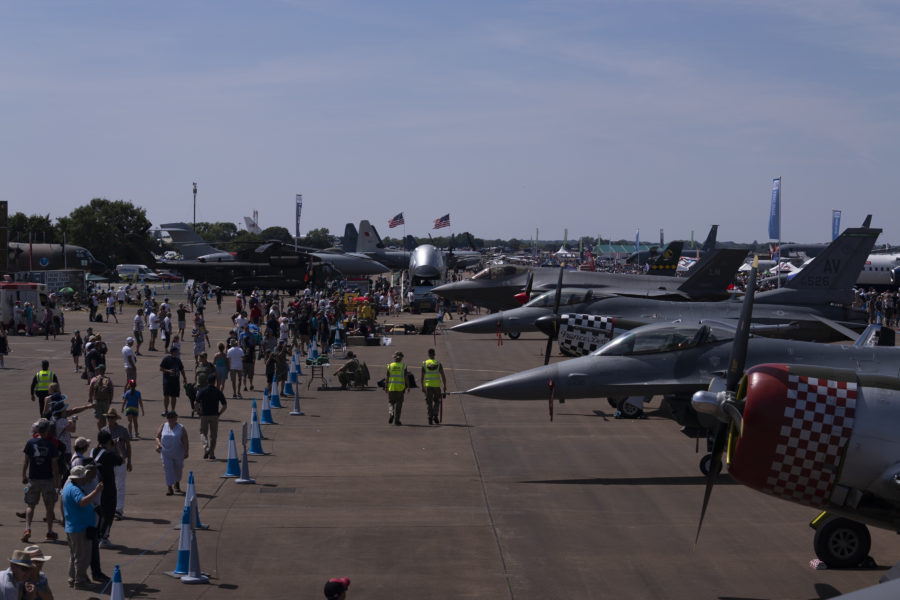FARNBOROUGH, U.K.—As tens of thousands of industry officials, military personnel, and aviation enthusiasts streamed through the Royal International Air Tattoo and Farnborough International Airshow, many gathered to see U.S. Air Force jets, assembled from across Europe and the U.S., and to speak to the aircrew who fly them.
For the Airmen, the airshows marked a key opportunity to engage with civilians at a time when concerns about Russia’s invasion of Ukraine and its implications for the continent are dominating the public discussion.
“People that are coming by … are interested in the aircraft and asking all sorts of questions about how NATO is structured and what USAFE is doing here,” Capt. Jacob Herrick, an F-16 pilot from Aviano Air Base, Italy, told Air Force Magazine from the U.S. corral at Farnborough, which also featured an F-15E and F-35 from RAF Lakenheath, U.K., and a C-130H from the Georgia Air National Guard.
Even more USAF aircraft were displayed at RIAT, including a CV-22 Osprey, a KC-46 Pegasus, a KC-135R Stratotanker, and an MC-130J Commando II. And between the two airshows, there was plenty of focus on what comes next—and questions, F-35 pilot Maj. David Bown told Air Force Magazine.
“[I’ve been] answering a lot of questions about the F-35 and what capabilities it brings to the U.S. Air Force, as well as all our partner nations. And then … at Farnborough, [I’ve been] meeting a lot with the industry and trade show partners, kind of seeing what the future holds,” Bown said.
The F-35, in particular, garnered intense interest from spectators, as more European nations move forward with plans to procure the fifth-generation fighter for their own air forces.
Of course, for many, the chance to see all of the fighters up close was unique.
“Everyone comes over to look at the Strike Eagle and talks about the size and how it’s one of the best fighters that they can think of,” F-15E weapons systems officer Capt. Trent Norton said. “It’s a lot of people who … they grew up seeing the Strike Eagle, or just the Eagle in general, and wanting to see it in person, and now they have the opportunity to be real close or even touch it, and they’re all really excited to see it.”
For the pilots and aircrew, the time at the airshows represented a change of scenery after several months of high operations tempo. In response to Russia’s invasion, the U.S. has increased its vigilance on the eastern front of NATO, with more air policing missions in the region and rotations in the area.
“We’re … supporting NATO and supporting our partner countries,” Herrick said. “So everything that they’re telling us to do, we’re out there doing it alongside England, Germany, everybody else that’s supporting NATO.”
For the F-16s at Aviano, in particular, he added that the past few months have been especially busy.
“We’re kind of becoming the quick-reaction force for NATO. Out in Aviano, we’re a little bit more forward deployed than the base … at Lakenheath, so we’re a bit more rapidly deployable,” Herrick said.
For the fighters from Lakenheath, ops tempos have always been high and have stayed relatively steady recently, Norton and Bown agreed. But there’s no denying that world events have created a new urgency.
“There’s a heightened awareness around the base and around the world on what’s going on,” Bown said. “And the motto is just, we’re always prepared, no matter what.”
